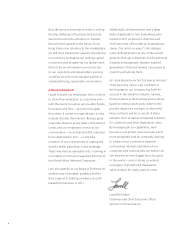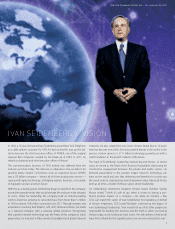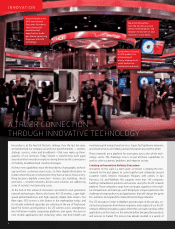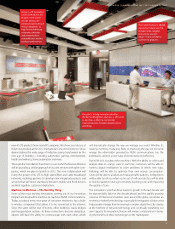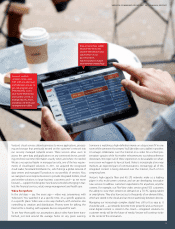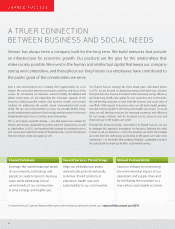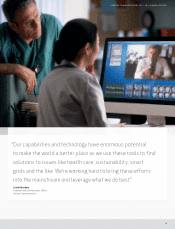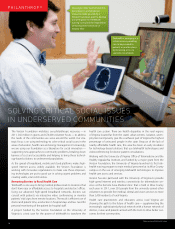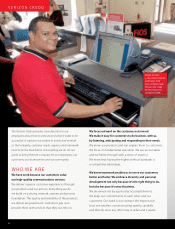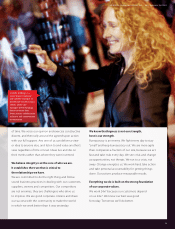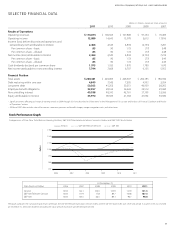Verizon Wireless 2011 Annual Report Download - page 18
Download and view the complete annual report
Please find page 18 of the 2011 Verizon Wireless annual report below. You can navigate through the pages in the report by either clicking on the pages listed below, or by using the keyword search tool below to find specific information within the annual report.
Verizon is working with
WellPoint, Inc., on a
digital initiative that uses
high-quality, secure video
conferencing through
our 4G LTE network
to help consumers take
steps to live healthier.
sOlutiOns
USING OUR TECHNOLOGY
TO BUILD TRUER CONNECTIONS
The broadband revolution has upended business models across the
economy, changing the way buyers connect with sellers, employers
relate to workers and entrepreneurs reach new customers. Through
our network investments and an ecosystem of innovation, Verizon has
helped create this platform for growth and embed digital intelligence
throughout the economy.
Now, these transformational models are moving beyond the business
market. Widespread access to high-speed networks and cloud servers
is stimulating entrepreneurial activity and bringing new network-based,
software-driven solutions to such sectors as health care, energy man-
agement and education. These new approaches to age-old problems
have great potential to change the delivery model for services, empower
consumers to improve their quality of life and create more eective and
ecient social institutions.
Verizon is focused on bringing new solutions and social innovation to the
marketplace, expanding the market for our services and improving the
lives of our customers and communities.
Transforming Health Care
New technologies promise a fresh way to approach the challenge of pro-
viding aordable, accessible and quality health care for America.
Experts believe that widespread adoption of electronic medical records
could reduce medical costs by as much as $165 billion a year through
eciencies and improved health outcomes. More broadly, better use
of broadband, mobile and cloud technologies will deliver a whole new
dimension of choice, convenience and control to the health care con-
sumer. Patients will be able to access their medical histories, securely,
whenever they like. Underserved communities in rural areas and inner
cities will enjoy greater access to health care. Adult children will be able
to care for their aging parents from far away, and doctors will be able to
monitor their patients remotely.
Verizon is helping to address these critical needs.
For example, some 200,000 Americans die every year from treatable
chronic diseases, many because they lack ready access to medical care
due to barriers of distance, time or availability of doctors and nurses.
Verizon is currently developing a suite of digital health care products to
overcome these roadblocks, using our 4G LTE network, smartphones,
tablets and advanced video technology to enable virtual visits between
patients and health care providers.
In one such venture, Verizon Wireless is working with health insurance pro-
vider WellPoint, Inc., to change the model for delivering patient services.
Thanks to the secure videoconferencing capabilities of our 4G LTE network,
WellPoint subscribers will soon be able to consult via their smartphones
and tablets with nurse managers who help them manage their chronic
conditions. These virtual face-to-face consultations eliminate the need for
travel for patients in rural areas and engage consumers more actively in
the management of their own health — helping patients remain inde-
pendent and reducing the cost of service for insurance providers.
16


